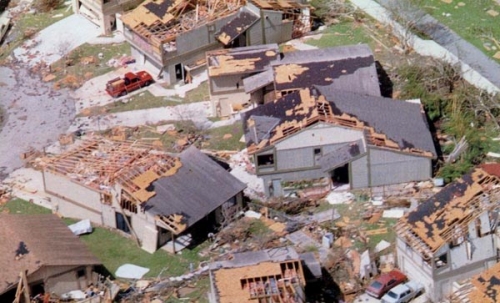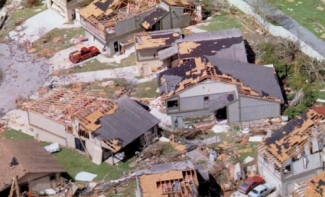After the Waters Recede, Worker Vulnerabilities Rise: How to Prepare Workers in a Post-Disaster Environment

After any disaster -- earthquake, hurricane, explosion, attack -- there are immediate survival concerns. Puerto Rico is right now on the brink of a humanitarian crisis, as millions face every new day with uncertain and limited access to food and potable water, many living in Hurricane Maria-damaged homes, and almost all without electricity or cell phone service. Nearly a week after a massive earthquake in central Mexico, Mexico City’s death toll continues to rise and authorities warn of the possibility of building collapse. For many who have experienced disaster in the last two months, however, the scariest moments have passed. In Texas, the highways are no longer under eight feet of water; in Florida and Georgia, people have taken the plywood off their windows and pulled trees from atop cars. As the water recedes, and the acute health concerns have passed, those that have the means begin to rebuild. And a new set of dangers -- for the workers who are tasked with removing the detritus of the disasters and starting to build again -- comes to the forefront.
Jose is one of those workers. At age 32, he has worked in construction for a long time -- but never in demolition. Today, he is picked up by a contractor to do demolition work in a neighborhood nearby. Jose doesn’t speak English but he understands enough to agree to the terms of the work. In jeans and a long-sleeved shirt, with steel-toed work boots and a pair of gloves, Jose feels prepared. However, when he arrives at his workplace for the day, he discovers a small dilapidated office building, with the roof half-caved in. In the front are piles of molding carpets and office furniture. Inside, the drywall is molding and puddles still dot the hallways and bedrooms. What vulnerabilities does Jose face? What acute and long-term illnesses and injuries might he encounter? How can we best prepare workers like Jose to reduce the number of worker injuries, illnesses, and fatalities in the wake of the next disaster, and the ones from which we are now recovering?
A recovery blueprint is hard to craft, when each disaster is unique, with varying degrees of wreckage and dangers, in different parts of the country and in different terrain, and requiring responses suitable to the needs at hand. Each disaster has brought different risks to workers, many of them a result of unsafe working conditions, lack of training, and/or ignored health and safety standards, and each of these major disasters -- 9/11, Katrina, Sandy, Irma -- have a worker death toll in the weeks and months after the event. But some common threads can be pulled, workers can be given basic training, and lives can be saved, if we can reach the workers.
Tomorrow’s unique webinar, “After the Storm: Lessons Learned on Worker Health & Safety During Storm Disaster Cleanup” will be led by renowned disaster response expert Joseph “Chip” Hughes, MPH, who has been recognized for his recovery efforts following 9/11, Hurricane Katrina, and the Deepwater Horizon oil spill. He will be joined by MCN’s Amy K. Liebman, MPA, MA and Juliana Simmons, MSPH, CHES as well as by Luis Vazquez, MPH, who has just returned from helping to facilitate recovery response training in Houston following Harvey.
Clinicians, community health workers and others will be equipped with ways to provide clear, practical, and actionable steps for workers to protect themselves, access relevant resources, and contribute to important rebuilding efforts without endangering their health.
Enroll on our website at: http://www.migrantclinician.org/webinars.html. Please spread the word about this webinar -- share on your social media and via email with your colleagues. The webinar topic will again be approached in Spanish on October 11th.
- Log in to post comments

